|
|
|
|
|
|
Methods Of Deploying Work
Before we set anything up, we must first decide on how we will be deploying the Job to the Freeway user. For the purposes of this tutorial we will focus on Job Deployment. Deploying other types of work eg: Assembly Orders, Sales Deliveries, Ticket Actions etc to a Mobility user occur in a slightly different manner.
Ostendo has numerous options available for you to choose from, however there can only be one method per employee and module (eg: Jobs, Assembly, Sales)
|
|
It is important to note that we do not deploy the 'Job' itself to Freeway, instead we deploy the Job Task. In Ostendo a Job may contain multiple tasks. These tasks can be deployed selectively to different Mobility users only via the Assignment Board, otherwise all tasks relating to that job are deployed if the Assignment Board is not being used. |
Available Methods:
- Assignment Board: Think of this as a booking system allowing back office staff to assign work directly to one or more Mobility users. The Assignment Board is set out like a Calendar allowing you to drag a Job Task from the Job Task list (right hand side) to an Employee (or Asset) on a specific date and time. This allows you to schedule each employees work in a defined sequence for them to complete. The Job Tasks will be listed in Freeway, sequenced based upon the dates and times specified on the Assignment Board. Click here for more information relating to the Assignment Board.
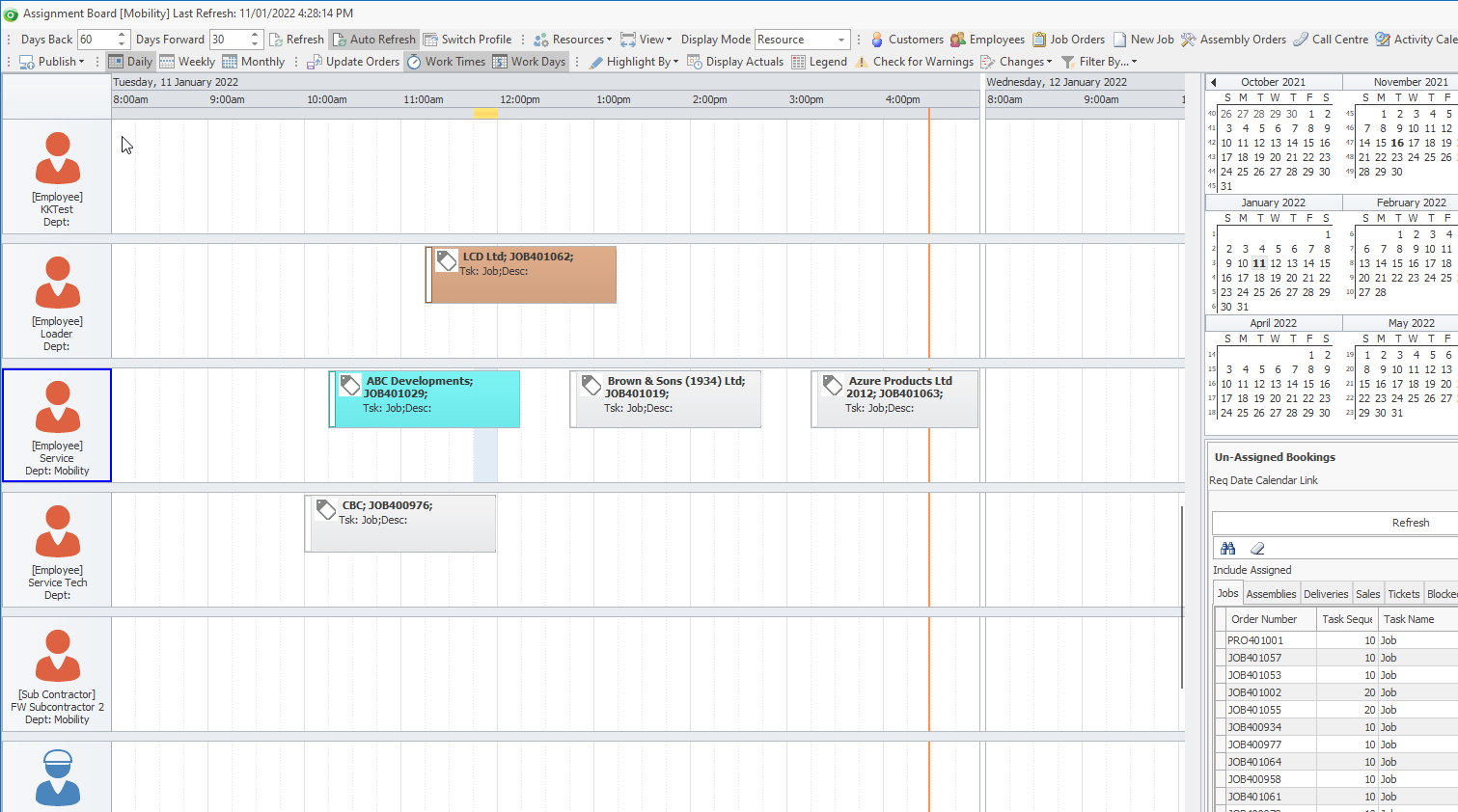
Assignment Board Assignments created From Job Task Resources
Instead of simply Dragging and Dropping Jobs Task to the Assignment Board, Ostendo also allows you to directly Assign a Resource and optional Start and Finish Date and Time directly from within the Job Task Tab of the Job. There are two ways this can be configured:
- Specifying the Resource only on the Job Task Tab and then allowing the Assignment Board user to determine the start time of the Assignment Booking. Once the Start Time is entered on the Assignment Board, all Resources specified on the Job Resource Tab will be coupled together and booked under the same Assignment Header Booking. In this case the Duration of the Assignment Booking is determined by way of Assignment Rules duration specified.
The following Assignment Rule must be specified:
- Job Schedule Button Logic = "Assign from Task Resources"
Process:
1) Specify the Resource Name only from the Job Task Tab
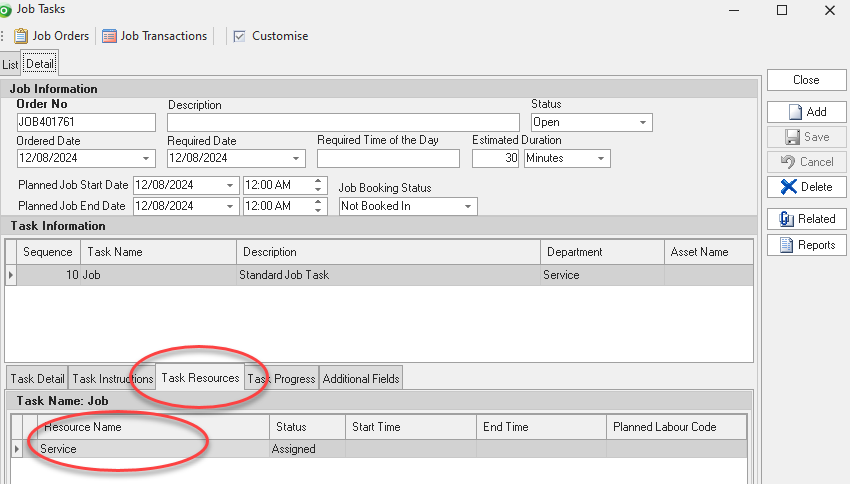
From the Assignment Board the user would:
1) Select the Job from the Job List
2) Press the Assign From Task Resources button
3) A suggested Start Date/Time is displayed allowing the user to override this with a different Date/Time.
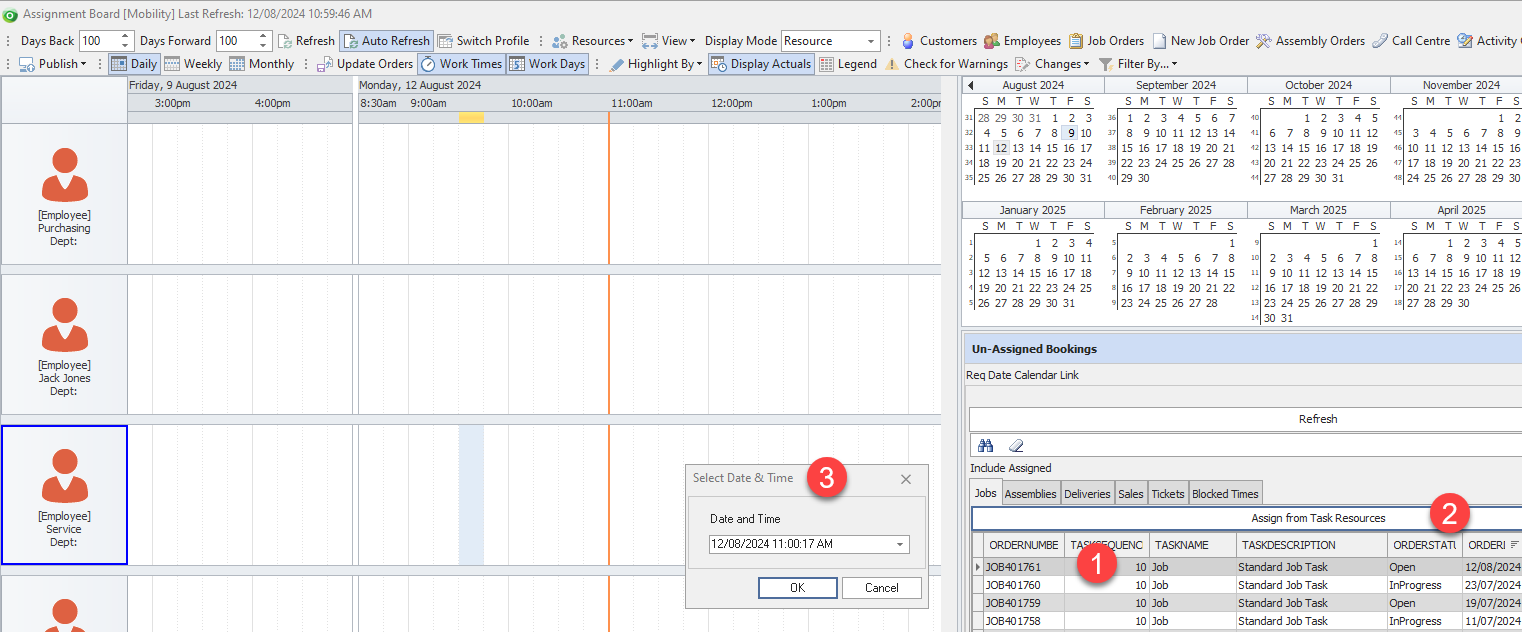
After the OK button is pressed, the new Assignment(s) is created on the Assignment Board

- Specifying the Resource along with both the Start Date/Time and Finish Date/Time on the Job Task Tab. This method automatically creates a single Assignment Booking for each Resource specified on the Job Tasks Tab with the stated Start Date/Time and Finish Date/Time.
The following Assignment Rule must be turned on:
- Auto Create Assignments from Job Task
From the Job Tasks Tab
1) Add a new Resource and select a Start Date/Time
2) Enter a Finish Date/Time
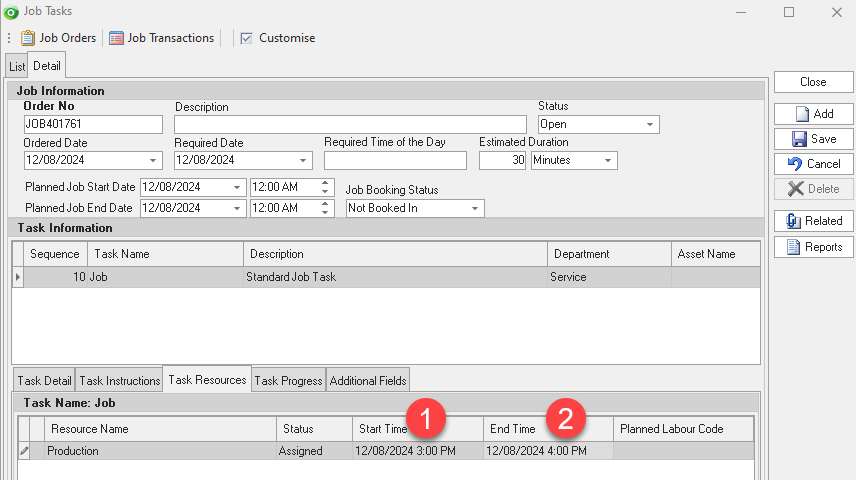
The Assignment is automatically created on the Assignment Board against the Resource.
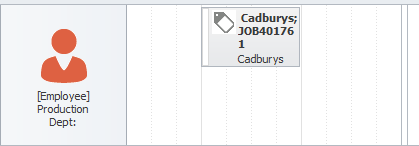
- Open Jobs: This method is used instead of the Assignment Board and simply deploys all Job Tasks with a Status of Open or InProgress. The Job Tasks will be listed in Freeway, sequenced based upon the Job Required Date / Urgent Order Flag and Job Priority Level
- Mobility Team: This is similar to the Open Jobs option, however you may specify an Employee or a Team on the Job Header itself to receive all Job Tasks with a Status of Open or InProgress. The Job Tasks will be listed in Freeway, sequenced based upon the Job Required Date / Urgent Order Flag and Job Priority Level
- Job Restriction Condition: This method allows you to specify via Structured Query Language (SQL) which Open or InProgress Jobs are deployed based upon field values specified in the SQL syntax. eg: all Open or InProgress Job Tasks for a specific Customer, Sales Person or Service Zone. The Job Tasks will be listed in Freeway, sequenced based upon the Job Required Date / Urgent Order Flag and Job Priority Level
Additional Assignment Styles (Jobs Only):
Jobs -> Job Orders-> Detail tab -> Settings Sub Tab
In addition to the above methods of deployment you may also want to make specific jobs available to one or more employees on an on going basis irrespective of how normal jobs are deployed. These Assignment Styles are held against the Job on the Service Tab on the Job Detail Screen
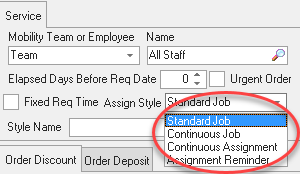
Standard Job:
This is the default Assignment Style for all jobs. If left as Standard Job, this will be available to the Un-Assigned Bookings List on the Assignment Board ready for an Assignment Booking. Typically when an Assignment Booking is made, it is removed from the Un-Assigned Bookings List on the Assignment Board.
Continuous Job:
You may have a specific job setup to track Downtime for some or all employees. In this case if you are using the Assignment Board to deploy Jobs, you would not want to repeatably re-assign this job ongoing. Instead you can flag this job in a way that is will continuously be available to that employee or team without a specific assignment booking being loaded. Continuous Jobs never appear on the Assignment Board Un-Assigned Bookings List. Continuous Jobs appear in the Freeway Jobs Lookup at the bottom of the List under the heading of "Continuous Jobs"
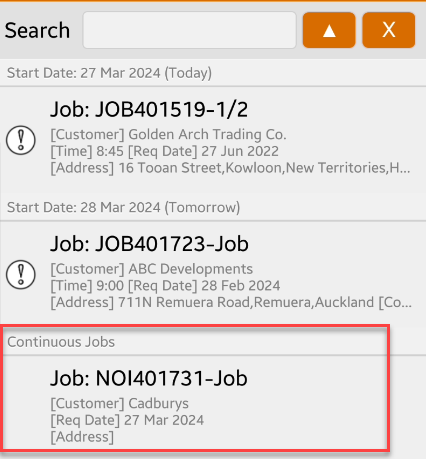
Available to Multiple Employees:
If you intend to make a continuous job available to multiple employees, you need to set them up in a Team and then link that Team on the Service Tab of the Job.
Available To a Single Employee:
If you intend to make a continuous job available to just one employee, then simply link that employee on the Service Tab of that Job.
NB: If you leave the employee name blank, then initially this job will be available to all employees, however when the first employee accepts that Job in Freeway that Employees name will be automatically updated on the job. This will then make this continuous job exclusive to that one employee.
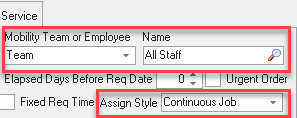
Continuous Assignment:
Typically when an Assignment Booking is made, it is removed from the Un-Assigned Bookings List on the Assignment Board. The assumption here is that one booking will generally be enough to complete the work for any one Job Task. However there maybe specific Job Tasks where you know multiple visits will be required to complete the work. In this case, once the Assignment Booking is made, the Job will remain on the Un-Assigned Bookings List for further scheduled bookings to be created. On the final visit, the Freeway user would simply mark the Task Status as Finished which will ultimately remove this Job Task from the Un-Assigned Bookings List.
Assignment Reminder:
This allows you to setup a job (that should remain open permanently) to become a booking placeholder. This then allows you to assign this job via the Assignment Board and override the Assignment Subject so that the Freeway User see’s it in their Jobs List. An example of this would be where you wish to include a booking to a Freeway Employee to remind them to do something.
This acts as a normal booking that can be assigned it to any employee(s) however in this case to instruct them to do something specific. This would be used in conjunction with a simple Style Template with a Checklist item eg: “Reminder Complete”. (The Style Name could be pre-loaded against the Style Name in the Job Header). The employee would simply create a Datasheet, tick the checklist box to say they’ve completed it and then complete the Datasheet which would then close out the Assignment Booking when it is sent back to Ostendo.
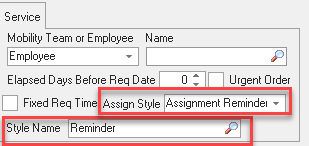
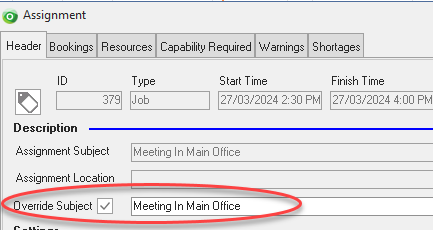
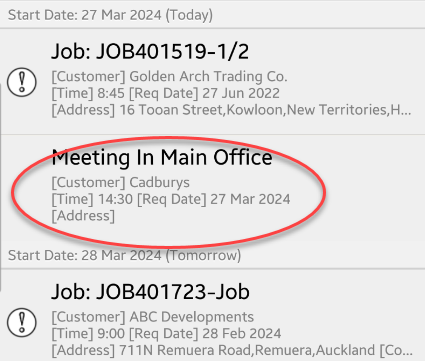
Jobs with this Assignment Style always remain available on the Un-Assigned Bookings Job List of the Assignment Board, to enable it to be used many times.
Once you have decided upon the method, you should proceed to Employee Mobility Settings to setup each Mobility Employee
For the purposes of this Tutorial, we will choose "Mobility Team" to deploy specific jobs to our employee "Jack Jones"


